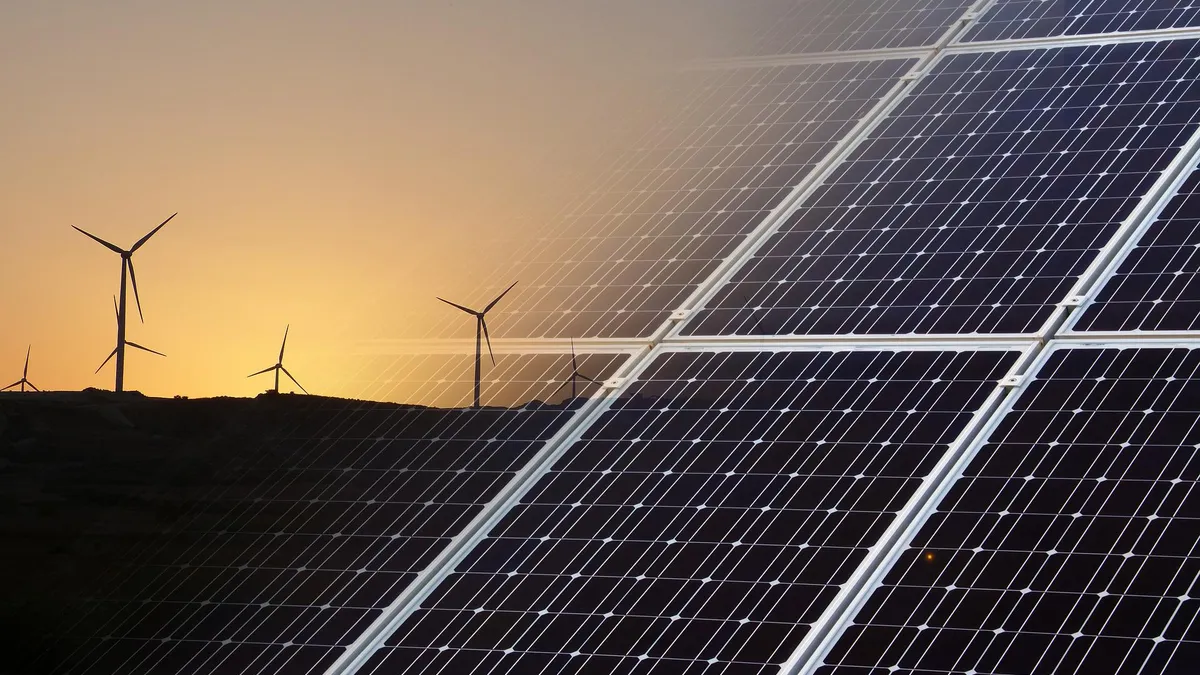Last week, over 13,000 energy and technology leaders arrived in Dallas for DISTRIBUTECH International to share knowledge, showcase new technology advancements, and discuss initiatives to prepare for the future of energy. Among the many topics discussed was the critical need to balance rising energy demands and environmental pressures with effective climate change solutions.
The most widespread source of energy consumption is electricity. According to The U.S. Energy Information Administration, 2020 electricity consumption rates were roughly 3.8 trillion kWh - 13 times higher than in 1950. With our ever-increasing reliance on electricity, this number is sure to grow exponentially in the coming years.
How can the US achieve meaningful decarbonization goals without sacrificing reliable and stable energy? Here are 4 of the biggest challenges and practical ways to meet them:
Siting New Solar and Wind Farms
Building renewable energy sources is more difficult than it seems. Scouting for sites is fraught with issues such as community opposition due to local aesthetics and disruption to the environment and recreation.
NIMBY (Not In My Backyard) is an influential source of opposition. Local residents join together in an effort to prevent shore front views in wealthy coastal areas from obstruction, which are needed to support offshore wind farms. These farms can also negatively impact local fisheries, while outdoor sports and entertainment activities such as sailing, waterskiing, fishing, or swimming may be disrupted, which are equally opposed by NIMBY advocates.
Utilities must take these concerns into account when scouting for renewable energy sites.
Maintaining Consistent Availability of Generation Capacity
The capacity to generate consistent, reliable electricity is both a regional and nationwide concern.
Wind and solar farms depend on a consistent level of wind velocity and sunny periods and regional concerns must be considered. For example, the southwestern United States is an ideal location for large commercial solar arrays. Areas in the north are more problematic since fall and winter days are shorter, reducing their ability to consistently generate energy. The Midwest is a prime location for wind-based generation since it experiences a consistent level of wind throughout the year.
Nighttime periods and cloudy days virtually eliminate solar farms as a consistent energy source while loss of available winds impacts the reliability of wind as a base load supply of energy generation.
Pivoting From Current Energy Usage Models
Over the last 20 years, utilities have been heavily involved with normalizing consumer energy consumption curves. Due to the high cost of siting new fossil fuel facilities, building new electric grid interconnections, and the high commodity pricing for imported power, utilities were driven to modify their customers’ energy usage patterns.
These consumption regulating policies included:
- Time of use metering to entice customers to use high energy devices at night
- Installation of energy monitoring devices on high use customer equipment to enable the utility to reduce energy demand during peak use periods
- Charging electric vehicles overnight
With fundamental changes occurring in how energy is generated, the availability of renewable power during low or no-sun periods and lower wind levels will require utilities to alter their energy consumption models.
Utilizing Government Support of New Electric Infrastructure
With the proposed government infusion of funds to build and modernize infrastructures, utility leaders will be ideally positioned to drastically improve the reliability of the US electric grid.
Utilities will be involved in aggressive transmission line building projects to ensure the effective distribution of energy across multiple state lines. This expansive build out of the US transmission and distribution system will create a dramatic increase in the need to accurately document the location and details of the new utility assets for current tracking and future analysis needs.
Energy leaders must seek advanced technology to provide them with solutions for precisely this purpose. Manual, paper-based field data collection must be replaced with digital workflows which automate and simplify asset data capture and analysis. Continued reliance on manual methods will cause them to lag behind the industry and impede their ability to support renewable energy for the modern era.
Sophisticated digital construction technologies can create consistency and standardization to help energy companies scale, improve data integrity to feed data-hungry operating systems such as GIS and ADMS, and act as a single source of truth for the entire organization.
Utilities will have the opportunity to manage the build out of the US electric grid with improved technology resources and develop a sustainable model primarily based on renewable energy generation.










